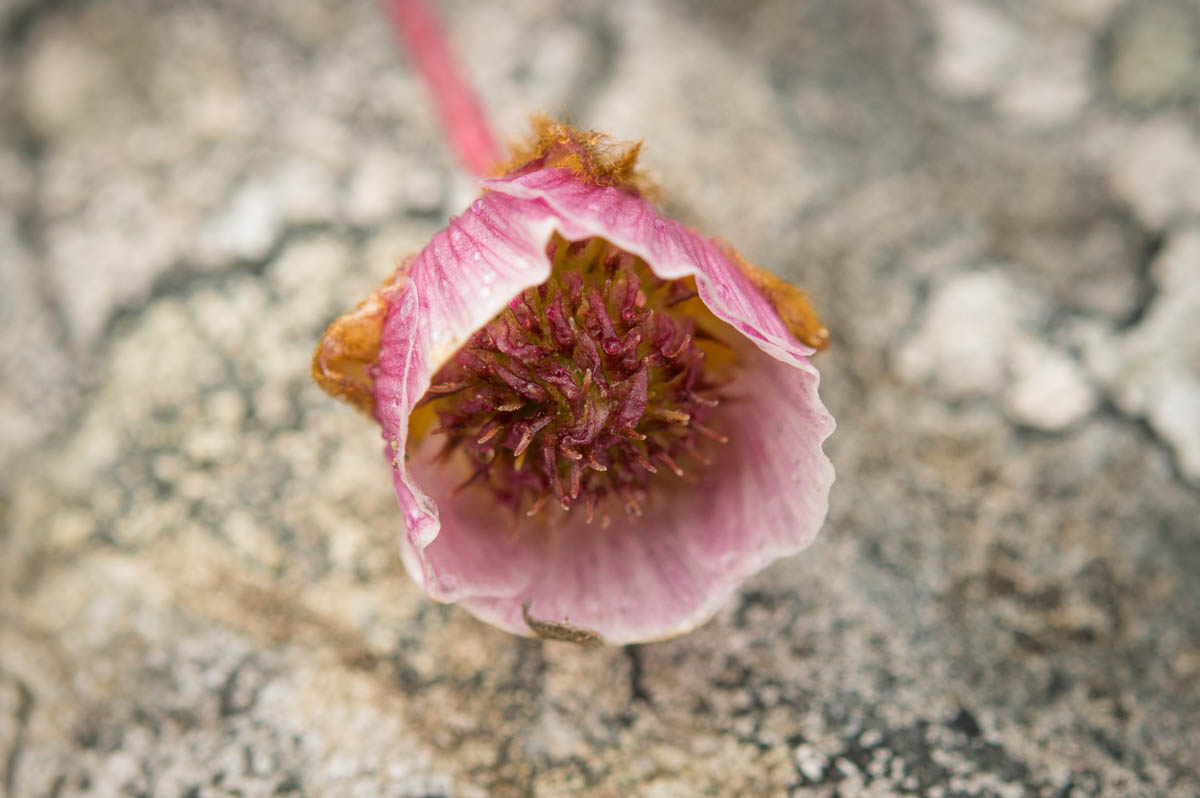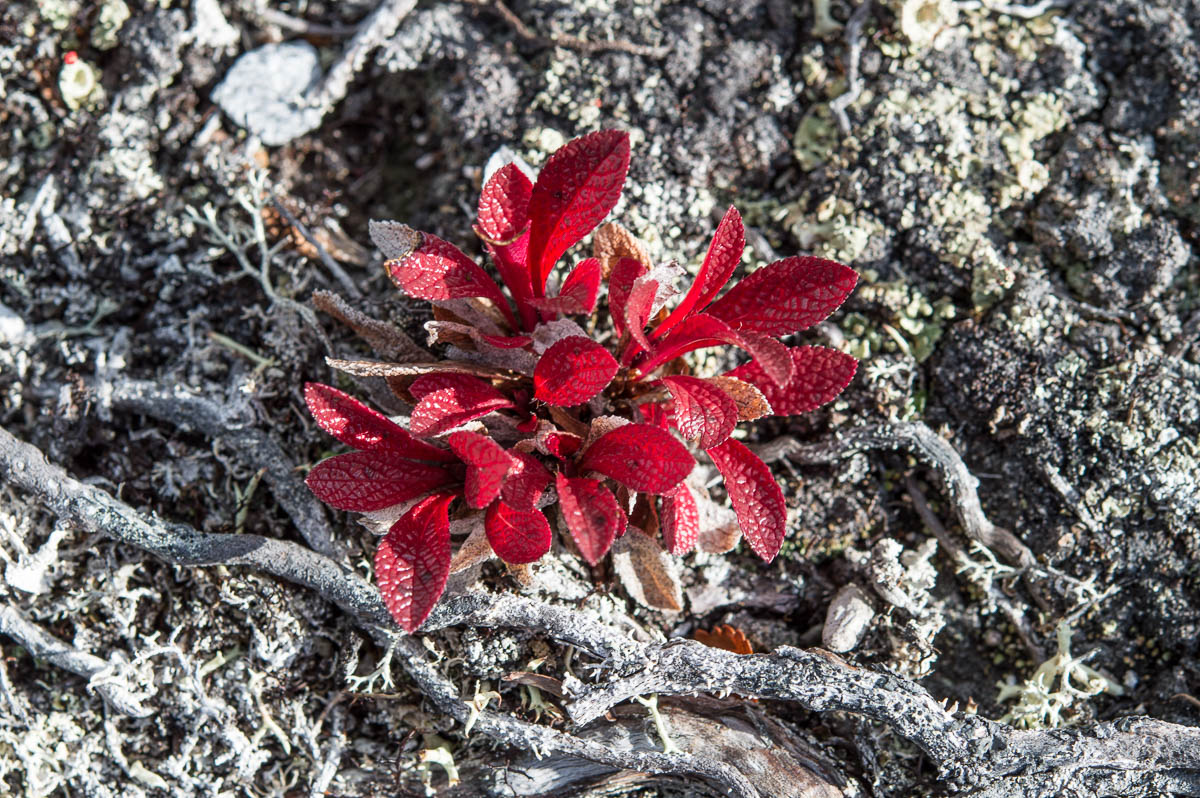
Sylarna to Storulvån.
Today’s hike overlaps with one leg of the Jämtland triangle, the most marketed and publicised part of the network of hiking trails in Jämtland. I was so disappointed – and so glad that I had been walking elsewhere the other days. Had I only seen the triangle, I would have gone home wondering what the big deal was, why would anyone want to go hiking here?
It barely felt like being in the mountains. In part I guess I was spoilt by the magnificent views of the last two days. Here the landscape was bland in comparison – less hilly, less varied, less colourful, less wild. But in part the trail was simply destroyed by the sheer amount of people there.
It wasn’t so much due to the number of people I actually met on the trail. They were many – around eighty, which is about ten times as many I saw on any of the other days! – but not so many that I was constantly surrounded by people. But the near-constant presence of hundreds of people on the trail had worn it down until I was walking not on a path but a wide rocky field of mud.
Alpine flora is tough in a way, but it cannot survive being trampled by thousands and thousands of feet. Because of this, information boards remind hikers to stay on the trail, but I only saw one or two such signs at the mountain stations, so most hikers probably never noticed them. They see the muddy, rocky trail and it is no fun to walk on – and it really isn’t – so they decide to walk just a little to the side. And the next person does the same, and the next hundred do the same, and the ground “just a little to the side” becomes a part of the muddy, rocky field. Even worse: biking was allowed on these trails. I don’t understand how anyone can think this is a good idea. Wherever the bikers decided to leave the path (and I can understand their decision, biking over rocks the size of half my head seems nearly impossible) they left destruction behind them. In some areas the path had multiplied into five or six paths; in others it was literally a single 6-metre-wide “path”. Almost worse than walking on a road, except for the lack of cars.

So today was almost zero nature experience, just plenty of exercise in fresh air. Which isn’t a bad way to spend a day. It was all downhill as well, so (with my poles to help me) my pace was about twice as fast as the previous days. For the record, I normally reckon with 3 km/h (including all breaks) when I hike the Sörmlandsleden trail. Here my pace was under 2.5 km/h on average, except for today. Today I ended up taking a long lunch break shortly before the end of the hike, because otherwise I don’t know what I’d have done with the rest of this day.
But – there was nothing photo-worthy to this hike. So instead I’m cheating a bit and posting a selection of macro photos from the past three days.

What I learned from this hike:
(The scrum master/software developer in me cannot “close” a project without holding a retrospective.)
- 20 km is the maximum for a day in mountainous terrain, and 2.5 km/h is reasonable to plan around.
- Avoid any trail that seems really popular.
- Keep the pack at 15 kg or less.
- Start each day’s hike early in the morning. If there is a large group staying in the same hut, and they might be going in the same direction as me, make particularly sure to leave a good while before them.

It’s easy to say that I should aim for a lighter pack, but not so easy to achieve… There wasn’t much in my pack that I could have done without, or would have wanted to be without. Each extra that I start considering comes with a “but”.
The one thing I might leave behind next time is the water bottle. I don’t get very thirsty when I hike, except on the very hottest days, and I could have managed easily with just the thermos flask.
The heaviest extra was my big camera. But even though it’s heavy, I would still pack it again if I were to re-do this trip. The macro photography took this trip to another level for me – it makes me stop and see things that I otherwise wouldn’t even notice. However next time I will only bring the macro lens, leave the “normal” lens at home and only use my compact camera for any non-macro shots. Or perhaps look for lighter-weight macro kit.

The snacks and dinner extras were heavy. The snacks lasted me almost exactly to the end of my trip, so the quantity was not excessive in any way. Maybe I could have brought less and bought more in the huts every day, but the range of goods they had in stock this close to the end of the season was very variable, and I’m not sure I’d want to rely so much on shopping there. One of the huts had run out of pasta as well as rice; another sold me their last half cup of lentils; none of them had any eggs left.
The spare clothes were an extra. I packed one extra of everything, and never needed the spare trousers or fleece jacket. Which was expected: I packed them just in case. I forded that one river without falling, but one of the ladies I met in the huts had fallen into the water while crossing a river and came out soaked. That could have been me.

A heavy pack feels even heavier if it doesn’t sit well. Which I knew, of course, but noticed extra clearly this time. In fact this may be part of the reason why the pack felt so heavy the first day. I was experimenting with various ways of attaching my big camera to the shoulder straps, on the front of the pack, so I could reach it easily without having to take the pack off my back every time I wanted to take a photo. Day two, I put the camera away because of the rain – and noticed that my pack felt lighter this way. I tried hanging it off one of the straps, or two, further up, lower down – but whichever way I tried, it felt heavier than having it inside the rucksack. So that’s where I ended up having it. It was somewhat inconvenient, so then I didn’t use it for landscape photos, but for macro photos I normally took a bit of a break anyway and put my pack down, so then it made less of a difference.

Leave a comment